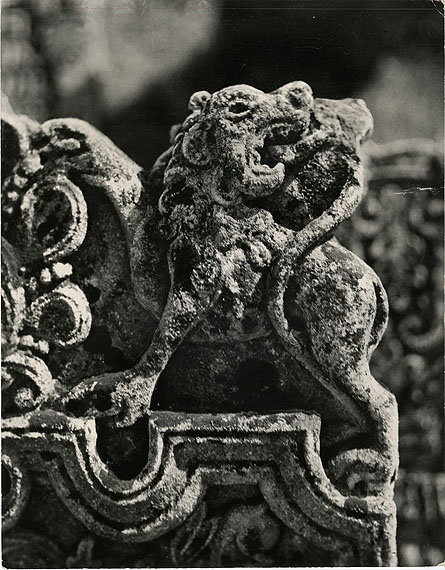
David Goberman »
STONE GARDEN
Exhibition: 27 Dec 2012 – 27 Jan 2013
Wed 26 Dec 18:00
ROSPHOTO. State Museum and Exhibition Centre for Photography
ul. Bolshaya Morskaya, 35
191186 Saint-Petersburg

The State Russian Museum and Exhibition Centre ROSPHOTO
ul. Bolshaya Morskaya, 35
191186 Saint-Petersburg
+7-812-3141214
office@rosphoto.org
www.rosphoto.org
daily 11-19, Tue, Thu 11-21

State Museum and Exhibition Centre for Photography ROSPHOTO
Ministry of Culture of the Russian Federation
STONE GARDEN.
Photographs by DAVID GOBERMAN
from the collection of the Petersburg Judaica Centre
27.12.2012 – 27.01.2013
Opening: 26 December 2012 at 18:00,
Yard Building exhibition hall
David Goberman (1912-2003), outstanding artist and remarkable art critic, was the youngest son in the numerous family of the Russian avant-garde. His biography is almost “classical”. He received his studies at cheder and at the Academy of Arts. A student of Nikolay Tyrsa, a friend of Natan Altman and Anatoliy Kaplan, Goberman spiritually belonged to the early 1930s, when Russian art was still trying to remain part of the European art scene.
Since his student years Goberman was interested in folk art that formed part of his teachers’ creed. Neverthelesss, his professional studies of folk art started not earlier than late 1940s, when the official Soviet art forbade, destroyed and trampled upon everything that was true and alive. At that time folk art became for artists what literary translation became for poets. Goberman collected, studied, published and popularized folk art and architecture of Moldova and the Ukrainian Carpathians. He was the first one to thoroughly study and popularize the Kosiv ceramics, true gem of the Ukrainian folk art.

Starting in the 1950s, during his travels across Ukraine and Moldova, David Goberman photographed carved tombstones on the old Jewish cemeteries. He captured thousands of monuments most of which were later destroyed. This is how he described it:
“During my studies of Ukrainan and Moldovan folk art, I found myself in an area of high concentration of remarkable Jewish monuments. Enthusiastically, I captured in sketches and photographs these reliefs in their unique plasticity of forms. In this way I obtained extremely valuable material on tombstones which had withstood the war but later were barbarously destroyed by the regime possessed with hatred towards human religious and moral sense. I grew fond of these cemeteries. Equipped with camera, I dodged between tombstones. I was watching the sun movement, patiently waiting for its vivifying ray to touch a relief or rushing to already lit carved images. It seemed that each of them was coming out of non-existence and that aroused excitement of a discovery”.(D. Goberman. Artist about himself. St. Petersburg, Litera, 1998.)
Goberman ushered in the studies on Jewish carved tombstones. But his perception of these monuments was artistic in its greater part. He was never tired to rejoice at the works of folk masters. To him, tombstones were subject not only to scientific, but also to artistic cognition. In this sense, Goberman inherited traditions of N. Altman, L. Lissitzky, I.-D. Rybak, S. Yudovin. Part of his graphic works created after the motifs of tombstone reliefs, is dedicated to dedicated to the carved tombstones from old cemeteries.
Goberman’s photographs are not merely photographic recordings of monuments, most of which nowadays are gone, but original and important pieces of art. Goberman not only printed but also retouched every single picture he made. Essentially, it is an original print that should be considered a finished one. Nowadays, Goberman’s photo archive dedicated to Jewish tombstones is located at Petersburg Judaica Centre. It holds several thousands of the author’s photographs from the 1950s and 1960s.
Tombstone photographs were published in four albums. In 2000 a large exhibition of Goberman’s works named Carved Memories was presented at the Brooklyn Museum of Art. Nevertheless, St. Petersburg audience is yet not well acquainted with this kind of folk art as well as with the artist who captured it.
In 2012 Petersburg Judaica Centre held a series of exhibitions to celebrate the artist’s 100th anniversary, each of them covering another part of David Goberman’s artistic heritage. An exhibition presented at ROSPHOTO is an important part of this program.
Valeriy Dymshits�
